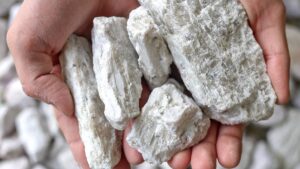Lithium star Lake Resources sets sights on becoming 100ktpa producer by 2030

Pic: Getty
Lake Resources has set its sights on becoming a global scale player in lithium carbonate production, planning to deliver 100,000t a year by 2030.
Lake Resources (ASX:LKE) has brought forward a US$15 million exploration project across its 100% owned Olaroz, Cauchari and Paso projects to accelerate them as part of its newly announced TARGET 100 program.
That is double the capacity of its planned Kachi lithium brine project, already doubled in planned capacity for an upcoming DFS on the back of immense demand for the battery and EV driven commodity.
To measure the scale of that ambition, consider that Allkem (ASX:AKE), one of the largest lithium producers on the ASX and a $6 billion company, produces around 12,600tpa of battery and technical grade lithium carbonate currently at is Olaroz project.
Even with at its planned final run rate, Allkem’s Olaroz and study stage Sal de Vida projects would only produce around 70,000tpa of lithium carbonate chemicals.
Lake will be using a unique, more cost-effective and more environmentally friendly direct lithium extraction method to produce the lithium from rich brines at its Argentine projects.
It says the scalability of that technology will be a key to its rapid ascent to 100,000tpa over the next eight years.
“Direct lithium extraction, to be used on Lake’s multiple lithium projects, can deliver scalable projects faster to market and supply rapidly increasing demand,” Lake MD Steve Promnitz said.
Consumer demand backs Lake expansion
EV sales ten years ago were running at a rate of 130,000 cars a year.
Now the same number are sold in a week. That points to enormous consumer appetite for EVs, the main source of demand for lithium chemicals.
That is only likely to ramp up further in the next decade, with some analysts forecasting deficits in excess of the entire size of today’s global lithium output by 2030.
Rio Tinto famously said it would need 60 of its Jadar mine in Serbia to fill a coming shortfall for the hot commodity.
Jadar has been effectively killed by local community pressure, highlighting the conundrum facing the world trying to fill that gap as mandates to switch for fuel vehicles to EVs from governments around the world intensify.
Central player
In that context, Lake’s Argentine brine projects loom as developments of great significance for the global market, and chairman Stu Crow said discussions were already under way with potential partners “to assist to assist the fast-tracking of these assets into production … as part of Lake’s ongoing discussions with battery metals customers and Lake’s desire to become an integrated and valuable part of the global supply chains.”
The same four reasons that were crucial to the decision to expand Kachi are behind the decision to accelerate the TARGET 100 Program.
Namely, demand from offtake partners for environmentally friendly lithium, support from export credit agencies with the UK and Canada agencies to debt fund around 70% of the Kachi capital requirements, supportive investment policies – including lower export taxes from the Argentine Government – and the confidence of Lake’s technology partner Lilac Solutions ensuring its modular DLE tech is scalable and cost effective.
“This, combined with increasing customer and consumer scrutiny around the environmental credentials of lithium production; and concerns about security of supply has given us the confidence to fast-track these developments,” Crow said.
What now?
Every plan needs good execution to come together, and Lake is already on its way to doing that.
A separate exploration and testing team has been formed dedicated to the “rapid development” of its three brine projects outside Kachi, utilising the comprehensive dta set developed during Kachi’s DLE test work.
The first rotary well of a 4000m, 10-hole program in the northern part of the Olaroz leases has begin. Olaroz covers a 30km long area to the east of a slew of established lithium producers.
Lake’s well-to-do neighbours in Jujuy province in north-west Argentina include Allkem’s Olaroz operation and the Lithium Americas-Ganfeng Cauchari JV.
Lake says the drill wells are designed to quickly quantify brines, develop aquifers and conduct pumping tests to provide data for initial feasibility studies with diamond drill holes to follow.
The brines will be sampled and test with the DLE method, similar to previous work conducted on the Kachi brines.
This article was developed in collaboration with Lake Resources, a Stockhead advertiser at the time of publishing.
This article does not constitute financial product advice. You should consider obtaining independent advice before making any financial decisions.
Related Topics

UNLOCK INSIGHTS
Discover the untold stories of emerging ASX stocks.
Daily news and expert analysis, it's free to subscribe.
By proceeding, you confirm you understand that we handle personal information in accordance with our Privacy Policy.








